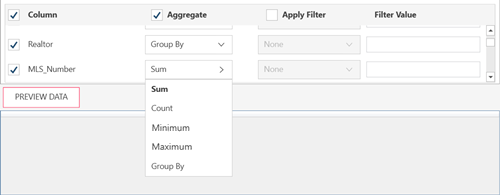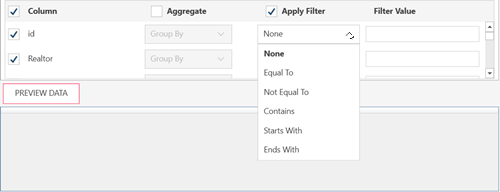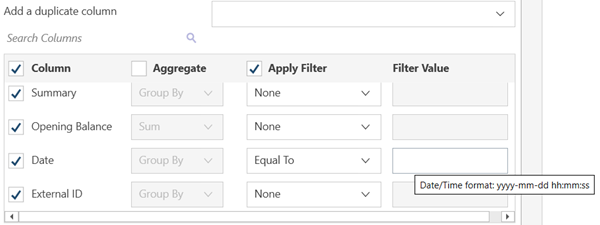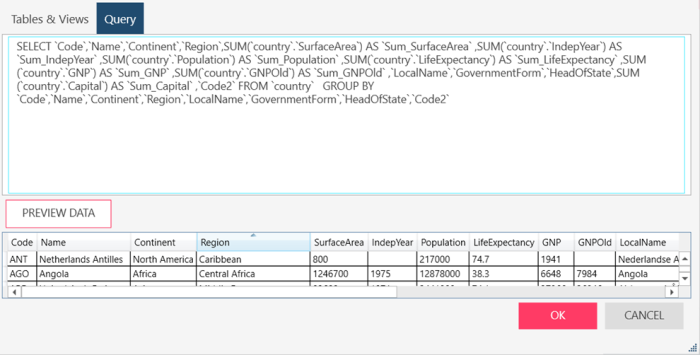Connector Dialog for Snowflake
NOTE: This connector requires a Java Virtual Machine (JVM) to function properly.
The Snowflake connector dialog includes the following fields and settings:
|
Field |
Description |
|
Connection |
|
|
Account Name |
The full name of your account and the region where it is hosted. The full account name may include additional segments that denote region and cloud platform. |
|
Authentication Method |
Determines the authentication method to be used during the course of the session. Select the method to use from the drop-down provided:
Required connection fields (in bold) will depend on the authentication method you select. |
|
User Name |
A valid User ID required to log-on to the data source. |
|
Password |
A valid Password required to log-on to the data source. This password must match the User ID above. |
|
Client ID |
Enter the client ID key for your application when authenticating to REST endpoints with OAuth 2.0 enabled |
|
Client Secret |
Enter the client secret for your application when authenticating to REST endpoints with OAuth 2.0 enabled. Important: The client secret is a confidential value used to authenticate the application to the service. To prevent unauthorized access, this value must be securely maintained. |
|
Authorization URI |
Enter the endpoint for obtaining an authorization code from a third-party authorization service for OAuth 2.0 implementations. |
|
Token URI |
Enter the endpoint for retrieving access tokens when OAuth 2.0 authentication is enabled. |
|
Redirect URI |
Enter the data range that will be used to filter the Google Analytics rows. |
|
Scope |
Enter a space-separated list of OAuth scopes that limit the permissions granted by an access token. |
|
Token |
Enter the access token used to authenticate to REST endpoints with OAuth 2.0 enabled. Typically, this option is configured by the application; however, in some scenarios, you may need to secure a token using external processes. In those instances, you can also use this option to set the access token manually. Note: You can use the Copy/Paste icon |
|
Database Name |
Enter or select the database you want to connect to. For some data sources, you need to click Fetch Databases first to populate the database drop-down list. |
|
Warehouse |
The username provided for authentication with the Snowflake database. |
|
Schema |
The username provided for authentication with the Snowflake database. |
|
Other Connection Options |
Connection options required to connect to the data source. If you need multiple string connection options, separate these by a semi-colon. However, you can only enter up to a maximum of 512 characters into this text box. Available options and valid values are discussed here. |
|
Reset Connection |
Check this box to reset the OAuath connection and fetch new access tokens. |
|
Test Connection |
Click to initiate a connection and test the values you have entered. If there are errors, messages will be displayed beside this button. Note: You can right-click on an error message to display a Copy button. Select the button to copy the error message. |
|
Tables & Views |
|
|
Tables & Views |
Allows you to load, and then select, the tables from your database by manually selecting from a list.
To load tables and views via search and select:
Note: If you wish to add a duplicate column, select this column from the Add a duplicate column drop-down list provided.
To select a column Check the boxes beside the columns you want to use. If you want to use all columns, check the Column box on the header.
To aggregate columns If the data returned is to be aggregated, check the Aggregate box on the header, then select the aggregation method you want to use for each column.
The following aggregation methods are possible for each data type:
To filter columns If the data returned are to be filtered, check the Apply Filter on the header. Then, for each column, select a filter method from the filter drop down and then enter the filter value in the Filter Value box.
Notes:
|
|
Query |
|
|
Query |
Allows you to load, and then select, the tables from your database by entering a SQL Statement. If you already selected Tables and Views, this box is updated to show the corresponding SELECT * FROM TABLE query.
If you want to define the query, enter the SELECT, EXEC, and/or WITH statements to execute.
Notes:
|
|
Preview Data |
Click to fetch data using the credentials and criteria you have specified. This allows you to confirm your connection, ensure you have connected to the correct table, check your query, and verify the information that will be loaded. Notes:
|
|
OK/CANCEL |
Select OK to establish the connection and fetch data or Cancel to close the dialog. The state of the OK and PREVIEW buttons provides a handy status about the state of your connection:
|
Note:
If you encounter a token expired error while the connection is in use, reset and test the connection, from the Connection Tab:
-
Check the Reset Connection box.
-
Select Test Connection.
© 2025 Altair Engineering Inc. All Rights Reserved.





